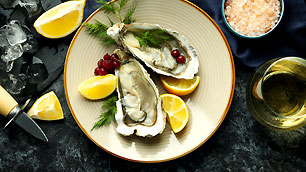Japanese Delights
Unagi
In the realm of Japanese cuisine, unagi stands out as a true delicacy. This freshwater eel, known for its succulent meat and unique flavor profile, is typically prepared by grilling and glazing with a tantalizing sweet-savory sauce. The most common presentation is Unadon, or Unagi Don, where the eel is served atop a bed of perfectly steamed rice.
Chef's Notes:
- Unagi is a Japanese delicacy featuring grilled freshwater eel glazed with a sweet-savory sauce.
- The dish is typically served over steamed rice as Unadon (Unagi Don).
- Making Unagi at home is simpler than you might think, with pre-cooked fillets readily available.
The Art of Unagi
For generations, unagi has held a special place in Japanese culinary tradition. Valued not just for its exquisite taste, but also for its reputed energy-boosting properties. While mastering unagi preparation once required years of training under skilled sushi chefs, the availability of pre-cooked fillets has made this delicacy more accessible to home cooks.
The heart of unagi's appeal lies in its signature sauce, unagi no tare. This magical concoction, blending soy sauce, mirin, sake, and sugar, imparts the distinctive sweet-savory flavor that unagi is famous for. When this sauce is brushed onto the eel and caramelized, it creates a glistening, mouthwatering glaze.
Making Unadon at Home
Crafting your own Unadon in your kitchen is easier than you might imagine. Armed with pre-cooked unagi fillets and a homemade sauce, you can whip up this restaurant-quality dish in less than half an hour. Here's a simple guide to get you started:
Ingredients
For the Unagi Sauce:
- 1/4 cup soy sauce
- 1/4 cup mirin
- 2 tablespoons sake
- 2 tablespoons sugar
For the Unadon:
- 2 pre-cooked unagi fillets (about 200g each)
- 2 cups cooked Japanese short-grain rice
- Toasted nori (seaweed) strips for garnish (optional)
- Sansho pepper for serving (optional)
Instructions
1. Prepare the sauce: In a small saucepan, mix soy sauce, mirin, sake, and sugar. Let it come to a boil, then reduce heat and simmer for roughly 5 minutes until it thickens slightly. Set aside to cool.
2. Ready the unagi: Turn on your oven's broiler to preheat. Arrange the unagi fillets on a baking sheet lined with foil.
3. Glaze and cook: Generously brush the unagi with your homemade sauce. Broil for 5-7 minutes, watching for the sauce to bubble and caramelize.
4. Assemble: Divide the cooked rice between two bowls. Top each bowl with a grilled unagi fillet. Add an extra brush of sauce for good measure.
5. Final touches: If you like, sprinkle some sansho pepper and add nori strips for garnish. Serve while it's hot.
The end result is a bowl of perfectly grilled eel, its luscious flesh enhanced by the sweet-savory glaze, all resting on a cloud of fluffy rice. This harmonious blend of flavors and textures showcases why unagi holds such a revered place in Japanese cuisine.
Variations and Serving Suggestions
While Unadon reigns as the classic unagi dish, there are other delightful ways to enjoy this eel. Unajuu is similar to Unadon but presented in an elegant lacquered box. Unagi also shines as a sushi ingredient, particularly in the popular dragon roll.
To round out your meal, consider pairing your Unadon with sides like miso soup, an assortment of pickled vegetables, or a crisp green salad. For beverages, a cold beer or a steaming cup of green tea complements the flavors beautifully.
Nutrition Facts
Here's an approximate nutritional breakdown for a typical serving of Unadon (note that values may vary):
-
- Calories: 450-500
- Protein: 25-30g
- Fat: 20-25g
- Carbohydrates: 40-45g
- Sodium: 600-800mg
- Iron: 2-3mg
- Vitamin A: 1000-1500IU
- Vitamin B12: 5-7μg
The Cultural Significance of Unagi
In Japanese culture, unagi consumption is closely tied to the sweltering summer months. There's a specific day, typically in late July, known as Doyo no Ushi no Hi, or "Midsummer Day of the Ox," when eating unagi is believed to bring good fortune.
This tradition has its roots in the Edo period, born from a clever marketing ploy. A struggling eel vendor convinced a renowned scholar to publicly endorse eel as a remedy for summer fatigue. The strategy was a resounding success, and the custom persists to this day.
Sustainability Concerns
While unagi is undeniably delicious, it's crucial to be aware of the sustainability issues surrounding eel fishing. The Japanese freshwater eel (Anguilla japonica) is currently classified as endangered due to overfishing and habitat destruction. When shopping for unagi, seek out sustainably farmed options or consider alternatives like anago (saltwater eel), which generally have a lower environmental impact.
By making informed choices as consumers, we can play a part in ensuring that this remarkable delicacy remains available for future generations to savor.
FAQs
What does unagi taste like?
Unagi boasts a rich, subtly sweet flavor coupled with a tender, flaky texture. Many describe it as buttery and surprisingly un-fishy. The sauce adds a delightful savory-sweet element that perfectly complements the eel's natural taste.
Is unagi always cooked?
Indeed, unagi is invariably served cooked. Unlike certain fish used in sushi, eel is never consumed raw due to toxins present in its blood that are neutralized through cooking.
Can I make unagi sauce in advance?
Certainly! Unagi sauce can be prepared in larger quantities and stored in an airtight container in your refrigerator for up to a month. This makes it a convenient option for quick meal preparation.
Are there any substitutes for unagi?
While unagi's flavor is unique, some people opt for alternatives like catfish or mackerel. For vegetarians, grilled eggplant or mushrooms glazed with unagi sauce can provide a similar culinary experience.
How do I store leftover unagi?
You can keep leftover unagi in an airtight container in the refrigerator for up to 2 days. To reheat, simply brush with a bit of sauce and broil until it's heated through.





























 Gastronomy Cities
Gastronomy Cities
 Amazing Food
Amazing Food
 Chef's Talk
Chef's Talk